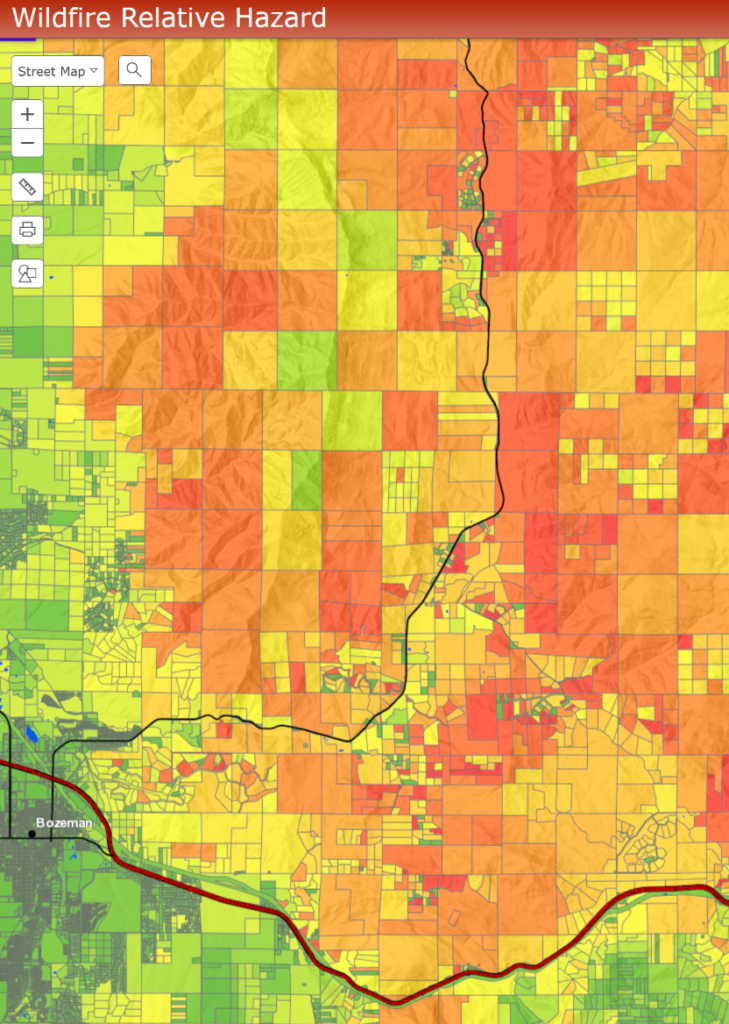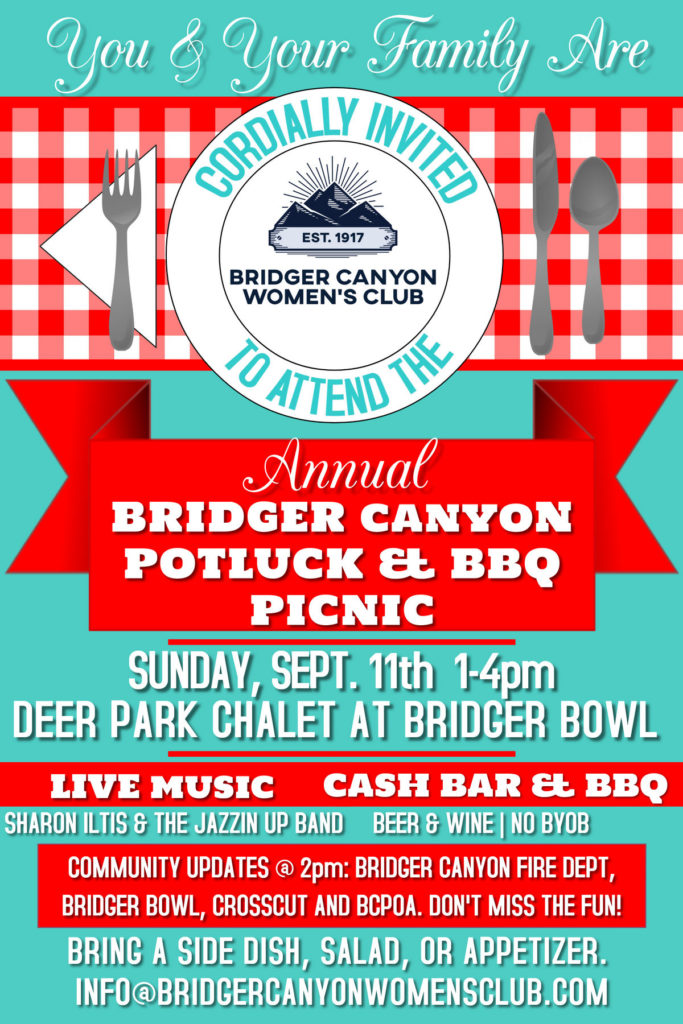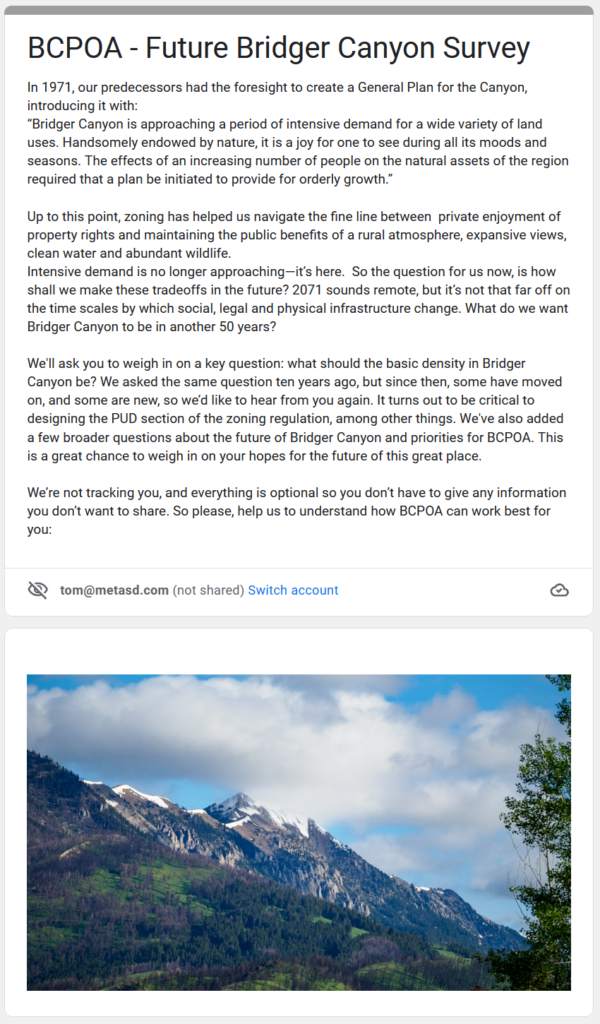When the zoning updates were essentially complete, we wrote:
Last June the County Planning & Zoning Commission adopted a Resolution of Intention to Amend the Bridger Canyon Zoning Regulations, the first step toward formal consideration of the new zoning that we will propose for the Bridger Canyon Zoning District.
We have near-final drafts on almost all substantive portions of the new zoning regulations that we will propose. These were summarized in last year’s newsletter [possible link] and the drafts have changed little over the past year. (The only substantive changes are to the regulations governing wireless communications services, to conform to revised federal regulations.) A number of factors have delayed completion of the draft, including. some unexpected comments from the County Planning Department. BCPOA’s representatives on the Zoning Advisory Committee are working toward completion, hopefully for presentation to the County this autumn.
Unfortunately, that was four years ago; none of us on the Advisory Committee expected the county to table the updates for so long. After the hiatus, I think it’s understandable that our members have lost track of the substance of the update. With that in mind, here’s a summary of where things now stand – quoting heavily from the last edition.
Background
The update improves the regulations’ implementation of the goals expressed in the 1971 General Plan, and resolves a number of issues that are often needlessly controversial.
The update addresses all areas of the Canyon, except for the Bridger Bowl Base Area, and all topics except administrative procedures. The Base Area will be tackled separately, because its complexity would delay implementation of good progress to date. The administration section is being revised in a separate, county-wide process.
The advisory board has held five public meetings at the fire station community room to share the details with residents and collect input. If you missed those, here is an overview of the proposal.
The update process was started by BCPOA almost twenty years ago, led by Bruce Jodar, but was sidelined in 2006 with the latest Base Area controversy. It’s now led by a Zoning Advisory Board convened by the County Commission, with support from Planning Dept. staff. The rewrite is guided by the General Plan for our district. Changes attempt to implement the plan better, and are careful to strike a balance between private enjoyment of property and preservation of public resources like wildlife and water quality. Wherever possible, standards have been made objective and numerical, to maximize clarity minimize the kinds of uses that require a public hearing for a permit.
Major Changes
There are three major components of the update:
1. The uses permitted in the AE and RF districts, which comprise the vast majority of the canyon, have been updated to eliminate a few obsolete uses, like feedlots, and to recognize new ones, like solar panels. The calculation of lot size and density for subdivision has also been improved. Setbacks from watercourses and other features have been modified, in part to make them more consistent with subdivision regulations
2. The General Standards governing all of the districts have been improved in a variety of ways. The biggest change is the creation of an Accessory Dwelling standard, that replaces the previous options for caretaker residences and guesthouses. This generally represents a relaxation of the previous standards, but there are new provisions limiting the permissible size and number and requiring proximity of accessory dwellings to primary residences, so that whatever burdens these dwellings imposed weigh most heavily on the owners who also benefit from them, and the temptation of separate rental is minimized.
Separate rental units have not historically been legal under the zoning, except by explicit subdivision, and we have preserved that restriction. The board felt that permitting multiple dwelling rentals would constitute an increase in density that could not be squared with the General Plan, and would require more intrusive regulation of other uses in order to mitigate the added traffic, water and other pressures that would result.
3. Administration. The county has created a comprehensive administration regulation that is to govern all citizen-initiated districts like Bridger Canyon. This covers such things as application and appeal procedures and standards for nonconforming uses. This will replace most of the administration chapter in the Bridger Canyon regulation. The intent is to improve consistency and reduce errors, without interfering with the substantive choices in various districts, which are quite diverse. An update to this section is imminent, spearheaded by the Springhill District.
Other standards cover guest ranches (less vague and therefore a little narrower), B&Bs (little changed), accessory buildings (requiring CUPs for very large structures, as often happens now), home occupations, refuse storage and dark skies lighting (modernized).
Omissions
Two sections written by the Zoning Advisory Committee have been left out of this update (against our wishes).
A new section governs short term rentals, which may be permitted as a Conditional Use. The standards seek to preserve the General Plan’s low density and rural character of neighborhoods without unduly impacting reasonable uses.
3. Planned Unit Developments. The PUD was originally conceived as a way to preserve open space and agricultural land in the bulk of the canyon by transferring density to the Bridger Bowl Base Area. Some very nice PUDs have been done, which protect resources and viewsheds through careful design and building envelopes. But along the way, through ambiguous drafting and Base Area developer pressure, the regulation has lost its way, and become at times a density giveaway rather than a fair public-private tradeoff.
When we surveyed the canyon a few years ago, many of you favored getting rid of the PUD and density bonuses altogether. The committee draft did not do this, because we thought it politically infeasible, though it would have made our job easier. Instead, we made the standards for obtaining a PUD more comprehensive, and included objective criteria for obtaining density through transfers or a bonus founded on preservation of functional, contiguous open space. However, getting rid of the PUD, which is either extremely complex, or full of loopholes, may now be a possibility.
The third omitted section was originally intentional: the Bridger Bowl Base Area. No one imagined that it would take a decade to get to this, but it should now be much easier to tackle, with friendly, public-minded parties holding most of the land.
BCPOA will initiate amendments on these three topics if the county does not promptly do so.
What can you do?
We really need these amendments adopted and put to bed, so that we can move on to the critical omissions above.
- Read the drafts, or at least skim them for topics of interest.
- Send an email to the Planning & Zoning Commission, expressing support for adoption. (Some style suggestions are at the bottom here.)
- Come (or Zoom) to the hearing on June 17th and make a comment.







 Twitter
Twitter Facebook
Facebook RSS
RSS Email
Email